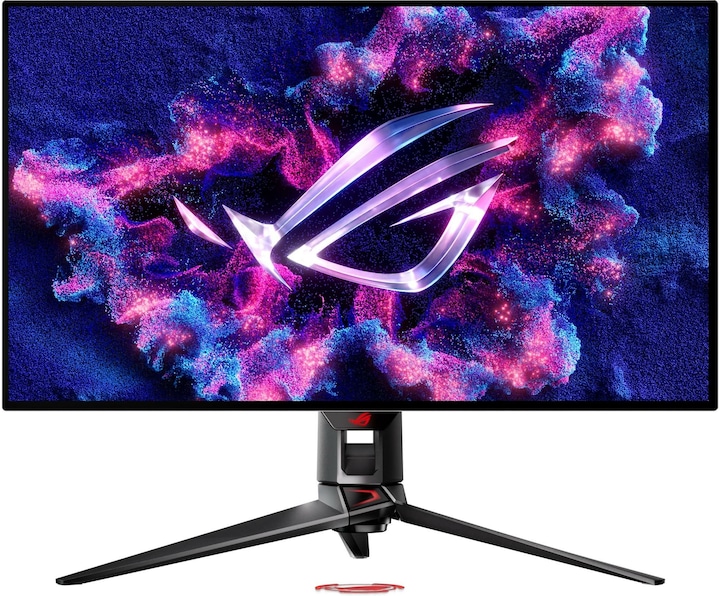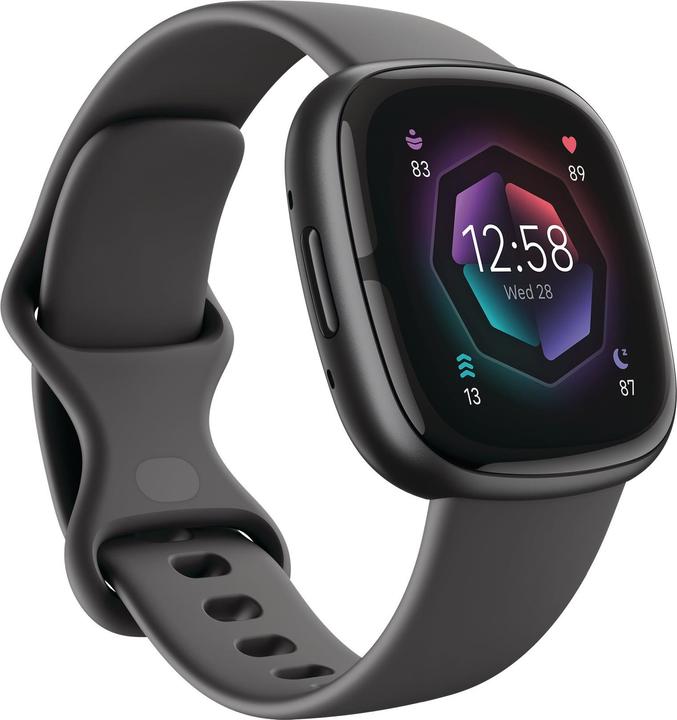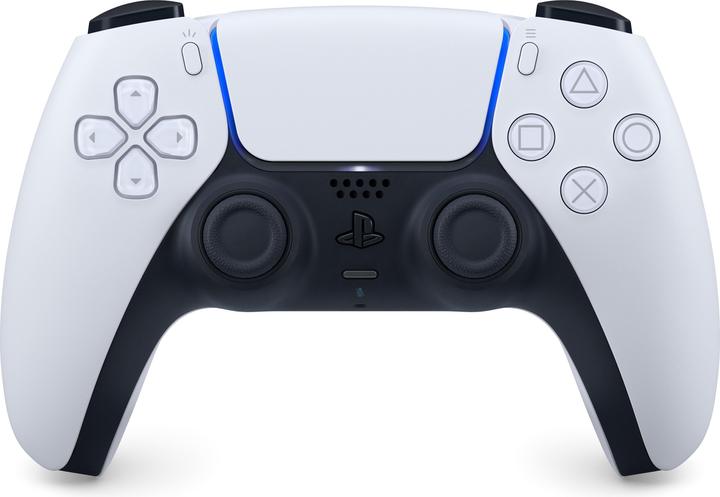

Gadgets and devices: our best and worst from 2024
2024 is over. Which devices won us over and which didn’t? The digital team reveals its highs and lows of the year.
2024 was no different – we tested countless devices or purchased them for personal use. Some became newfound favourites, while others made us want to pull our hair out.
Michelle loves one kind of picture
Best: Canon Zoemini 2
I don’t take a lot of photos. But when I do, it’s a really important moment. And then? The photo disappears into the depths of my memory card. And that has to change. When I tested the Canon Zoemini 2, I was impressed.

However, I wasn’t sure whether I would use the device regularly. Then came the day: a special offer on Digitec. So I bought the pink version with a smart New Year’s resolution to tale more physical pictures. Now I can fill my little memory box with wonderful moments captured in mini-prints as well as concert cards and postcards. Yay!
Worst: Sony KD-55X75WL TV
Let me begin by saying, this isn’t to do with the model. A TV simply takes up too much space in my small apartment. It also tempts me to watch more television than I’d like. That’s why I’ve refused to get one for years.
I can play games on my PC and I like watching my series on my laptop. Surely that’s enough? And yet my boyfriend persuaded me to put a TV in his apartment (at least it’s not at my place). I can switch off from football and ice hockey, but thanks to Arcane, Spy x Family and the like, I now watch way too much on the giant screen unfortunately. I’m disappointed in myself.
Phil lets off some steam
Best: IT Dusters CompuCleaner Xpert
For my article on how to clean the PS5 fan, I got my hands on an electric compressed air cleaner. Something I should have done years ago. I’m over using the unecological compressed air from the can. I’d always lose the thin tube and most of the time end up sacrificing my own lungs.
The IT Dusters CompuCleaner Xpert is completely different. I’m really looking forward to using it in my next PC spring clean. The way the dust flies out of the housing is incredibly satisfying.
Feels like PowerWash Simulator, only real and with air.
Samuel’s disappointed with Apple for once
Best: Asus ROG Swift PG32UCDP
2024 was a monumental year for monitors – almost every manufacturer launched a 32-inch OLED with UHD resolution. I tested four of them myself and all of them were good. Of course, to no surprise, my favourite was the most expensive model. The Asus ROG Swift PG32UCDP is the brightest, has the best black level during daylight and well thought-out controls.
I would buy the monitor today with my own money. And I say «would» because I always have test devices on my desk. Plus, there will be even larger models with the same pixel density in 2025. Awesome!
Worst: Apple HomePod 2nd Gen
In the spring, I set up a small home cinema. I wanted it to be as uncomplicated as possible. So I ended up going for a short-distance projector, an Apple TV and two HomePods – that way I didn’t have to set up any speaker cables or screw anything together. Unfortunately, Apple’s speakers didn’t impress me at all.
There’s no real equaliser and the bass is so undefined that I can’t even listen to music on the HomePods. When I’m watching movies, the sound is just about tolerable with dialogue enhancement and bass reduction activated. I’d have been better off drilling two holes in the wall and hanging up a soundbar.
Lorenz feels like he’s in Lord of the Rings
Best: Samsung Galaxy Ring
No other device category experienced such a boom in 2024 as smart rings did. Although these aren’t new, Samsung’s entry into the finger tracker segment has given the entire industry a boost. Suddenly everyone was reporting on smart rings and they received the same media coverage as smartphones and smartwatches.
The rings won’t be available here until January but you don’t need to worry. There are plenty of alternatives from smaller manufacturers, some of which have been producing such rings for years – like the pioneer Oura, but also RingConn and Ultrahuman.
Worst: Qi2 standard
Apple, Google, Samsung and countless other manufacturers are finally working together on a standard – and it’s an absolute disaster. The Qi2 standard for wireless charging was supposed to be widely accepted by 2024, but even at the end of the year, virtually all Android manufacturers were still missing it.
Apple was able to convert iPhones to the technology with a software upgrade, as Qi2 is based on MagSafe. Accessory manufacturers have also upgraded their wireless charging pads to Qi2. In the Android world, only HMD has so far managed to launch a smartphone with Qi2 technology. Google, Samsung and the like are on the sidelines. Customers don’t trust them.
Kevin has had a successful year in gaming
Best: Steam Deck OLED
Thanks to the Steam Deck I’ve rediscovered my love of gaming. As a child and teenager, I was THE (console) gamer and had what felt like every game on every platform. At some point, I discovered a life outside of games and later in my studies I had other challenges to overcome. Then the children came along and I didn’t have time for anything anyway.
Thanks to the Steam Deck, I can treat myself to a short gaming session every now and then. So this year I’ve played over 30 games – probably more than I’ve cumulatively played in 20 years.
Worst: Creality Ender 3 V2
I’ve had the Ender 3 V2 3D printer from Creality since 2021. But I didn’t even use it once last year. I’d actually like to go back to 3D printing, because I usually enjoy doing it.
But every time I get the urge, it soon vanishes again when I realise I have to set it up again after such a long period of disuse – otherwise it won’t print properly. For someone like me, who only prints now and then, a device that requires less maintenance would be appealing.
Debbie has taken a liking to handhelds
Best: Steam Deck
When the Steam Deck was released a few years ago, it was one of the most useless gadgets I could throw my money at. I’m simply team PC Master Race and swear by my gaming computer. Then I started working from home and realised that I didn’t feel like sitting at my desk again after work.
But I wanted to game – so I had a dilemma. And so I changed my mind about the Steam Deck and got the OLED version. I’ve been a couch and train gamer for a few weeks now and am working through my pile of shame in peace. And I’m even starting to get used to the controls.
Worst (but not from the get go): Adobe Lightroom
After my summer holiday in the arctic glacier landscape of Spitsbergen, I searched for a good program for RAW photo editing. I chose the seven-day trial version of Adobe Lightroom. It was love at first click, thanks to my colleague David’s great Lightroom tips from colleague too.
After the trial period, I needed more time and thought the Adobe subscription would have a one-month notice period. I was wrong. Adobe advertises with monthly payment, but the subscription runs for at least a year. My bad for not looking closely, but I was still annoyed about the annual subscription for 144 euros. If you cancel it earlier, the contract is terminated immediately, but with a «fee» of 50 per cent of the charge for the regular remaining term. And you can’t deactivate the automatic renewal of the annual subscription. What a cheek! My advice: switch to a different subscription model. This terminates the current contract and starts a new cancellation period. So I got out of the annual contract after all. But I’ll keep my hands off Adobe in future. And I mean it.
Jan’s looking for a new companion
My worst gadget of the year 2024 is the Fitbit Sense 2
Not a new gadget, but one that disappointed me. The GPS tracking was massively unreliable when running and shortened my routes – that’s if it recorded them at all. Other watches from Garmin, Huawei or CMF are much better at tracking.
For me, it’s time to say goodbye to Fitbit. The Pixel Watch and its short battery life isn’t worth me staying with the Google service.
Domagoj can’t resist consoles
If I’m honest with myself, I don’t really need the PS5 Pro. Of course, Sony’s new console is significantly more powerful on paper than the original PS5. But in practice, I notice little to no additional performance in many games. Some titles run marginally better, have a slightly higher resolution or offer a few nice additional graphical details thanks to ray tracing. Nothing crazy.
And yet I’m still glad that I treated myself to an upgrade. My FOMO would be too great if I couldn’t play the next Sony blockbuster in the best possible quality. And even if only a few games currently make use of the Pro’s power, I’m sure that this will change over the course of the console generation. So the PS5 Pro is also an investment in my medium-term gaming future.
Flo: small and persistent
Best: Mac Mini (M4)
Apple has a reputation for being expensive. That may be partly true. But what Cupertino knocked out last autumn is a really strong deal. Namely the basic model of the Mac Mini. M4 chip, 16 Gigabyte RAM and 256 GB memory for just under 600 francs. I’ve got one at home and it does everything I put it through.
Quickly too. Even really demanding tasks such as my (admittedly amateurish) video editing and exporting don’t overwhelm it. 256 GB storage isn’t tons – but with an external SSD, NAS or cloud storage, this isn’t an issue. And if you don’t believe me, read the verdict from our Apple king (and fittingly Thurgauer) Samuel Buchmann.
Worse: Sony DualSense wireless controller
No, the controller isn’t brand new. It’s not bad either. I actually enjoy playing with it, even if the size is at the limit of my small hands. I also like the haptic feedback. But mate, the BATTERY! In my opinion, a controller should be able to withstand a few days of extreme gaming before it needs to be recharged.
I have the feeling that after three hours at a time, the thing is already going to give up on me. Pretty poor, especially when you consider that the fun costs 65 francs. I’ve since purchased a five-metre USB-C cable. Wireless can go do one.
I've been tinkering with digital networks ever since I found out how to activate both telephone channels on the ISDN card for greater bandwidth. As for the analogue variety, I've been doing that since I learned to talk. Though Winterthur is my adoptive home city, my heart still bleeds red and blue.

















